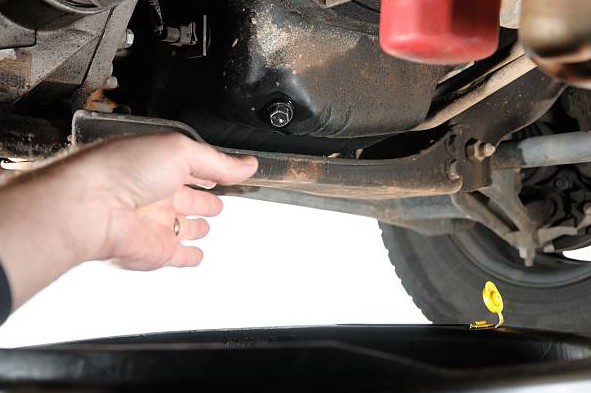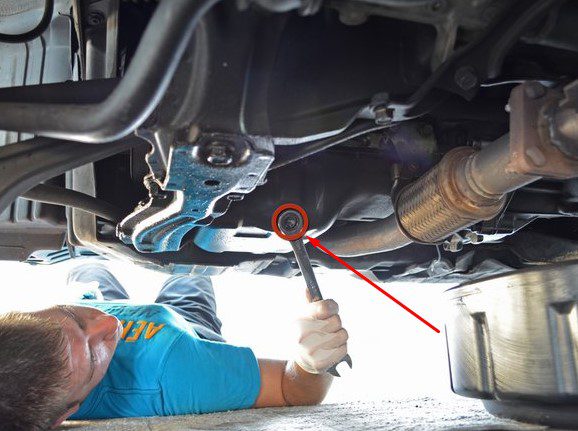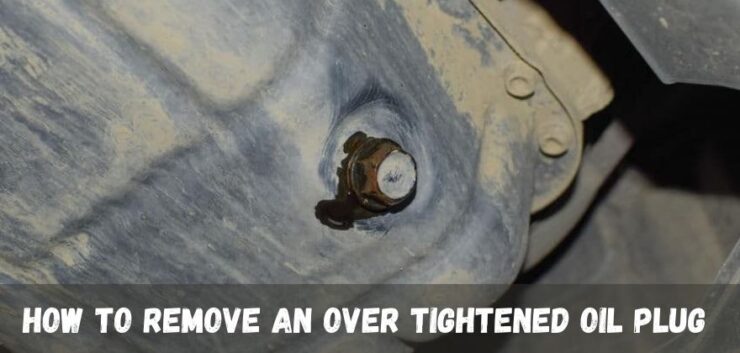You know your car needs oil, right? But have you ever checked whether the oil plug is over-tightened? Like, the one under your car!? No? You seriously need to start doing that! An over-tightened oil plug can take you to a world of trouble. Your engine will take the brunt of the damage, and it could end up costing you a fortune to fix.
Now you might have realized the importance of fixing an over-tightened oil plug. Having an over-tightened oil plug doesn’t mean you have to pay extra bucks to the repair shop every time.
Since the solution doesn’t seem too complex as the impact is. There are a few things you can do on your own to fix the issue. All you need is just a proper guideline, and we’re here to help you out.
What is an Oil Plug?

An oil plug or oil drain plug is a small, cylindrical device that is inserted into an engine’s oil drain hole to prevent the loss of oil. The oil plug is made of rubber or plastic and has a metal wire hoop on one end that is used to pull it out of the drain hole. The oil plug helps to keep the engine lubricated and prevents damage from occurring due to a lack of oil.
Where is the oil plug located?

You may be asking yourself, where is the oil plug located on my car? The oil plug is a part of your car that is responsible for draining the oil out of your engine. An oil plug is typically a black or silver cylinder that has a rubber gasket around it. The oil plug is located at the bottom of your engine, near the flywheel.
What Happens If You Over Torque an Oil Drain Plug?
Over tightening the oi drain plug can cause damage to the threads on the plug and the engine. This can make it difficult to remove the plug when it’s time for another oil change. Technically, Oil plugs are used to stop the flow of oil and gas when drilling a well.
So, when the oil plug is too tight, it can’t let the oil flow through like it’s supposed to. This will cause the engine to overheat and eventually seize up. In some cases, they can fracture or even cause a blowout.
How to Remove an Over Tightened Oil Plug – Steps
You might have got an idea about how dangerous an over-tightened oil plug can be. Now it’s time to move ahead to the actual solution. The process of fixing an overtightened oil plug consists of several things. Here we’re going to present the whole procedure step-by-step. Let’s move ahead.
Prep Work
If you’ve ever tried to remove an over-tightened oil plug, you know it can be a real hassle. The key to removing an over-tightened oil plug is preparation. So, make sure you’re prepared to start the process.
First of all, make sure you have the right oil drain plug removal tool. You’ll need an oil filter wrench and a socket wrench with a corresponding socket size. If the plug is extremely tight, you may also need a cheater bar or a pipe to give you more leverage.
As we mentioned, you have to match the size of your tool with your engine requirement. For this, you will need to remove the oil cap and measure the size of the hole. Once you have the size of the hole, you can find the corresponding socket at your local auto parts store.
Use a Socket Wrench
Socket wrenches are the best tool for removing over tightened oil plugs. The angled design of the socket wrench fits perfectly against the plug and allows for a lot of torque to be applied with minimal effort.
Some people have said that it doesn’t make any difference whether you use a manual or an electric wrench. The most important thing is to apply the correct amount of pressure.
While using a socket wrench, first, get the correct socket wrench size for your plug. Second, place the socket wrench onto the plug and apply pressure until the plug begins to turn. Finally, twist the socket wrench in a counterclockwise motion to loosen the plug.
Get a Hammer
One of the most common tools for removing an over-tightened oil plug is a hammer. However, this tool is not effective single-handedly. You’ll also need a socket wrench, as the main purpose of using a hammer is to aid the wrench when you’re unable to loosen the plug using only the wrench.
To use the hammer, you have to wrap a cloth around its head. This will protect the plug from being damaged. Turn the plug counterclockwise with the wrench. If the plug is still tight, use the hammer to hit the wrench. This will help to loosen the plug. If the plug is loose, remove it.
Try A Gator Grip
When common tools seem not to be effective, using a gator grip can be suitable for this job. It is a small, handheld tool that uses leverage to loosen over tightened bolts and screws.
To use the gator grip, put the plug between the two handles and twist until it comes loose. It’s important to make sure that the plug is straight before twisting, or you could damage the threads.
You should also make sure that the gator grip is properly adjusted so that it’s tight enough to get a good grip on the plug but not so tight that it damages the plug or threads.
Heat Up the Surrounding Area
Heating the nearby area and the plug itself can be useful to loosen the plug and remove it. However, It is possible for an oil plug to be over tightened so that it doesn’t allow the engine to turn on.
In that case, you’ll need a pot of hot water and a rag. Then pour the hot water over the plug and wait a few minutes. The heat will loosen the oil and the plug will be easier to remove. Be sure to have a container ready to catch the oil when it comes out.
You can also heat up the surrounding area of the oil plug with a heat gun or lighter. Once the area is hot enough, the plug can be unscrewed with a wrench.
Use Penetrating Oil
In some cases, the plug can become so tight that it’s impossible to remove without the help of a tool. However, there is a simple solution that can oftentimes do the trick. There are many types of penetrating oil, so it is best to consult with a professional.
Penetrating oil is a type of lubricant that is specifically designed to loosen tight screws and bolts. It works by breaking down the adhesive forces between the metal surfaces. This allows the parts to move more freely and makes them easier to remove.
There are many different brands of penetrating oil available on the market, but any type will work in a pinch. Simply pour a small amount onto the plug and let it soak in for a few minutes. Then use a wrench or socket wrench to twist it free.
Frequently Asked Questions
How do I safely remove an over-tightened drainplug?
If the drain plug is over-tightened, it can be difficult to remove. One way to remove it is to use a socket wrench or a pipe wrench. Another way is to use a hammer and chisel to break the plug loose.
Rounded off oil drain bolt – How to remove?
The easiest way to remove a rounded off oil drain bolt is to use a vise grip or locking pliers. Place the locking pliers over the bolt and turn it counterclockwise until it comes loose. If the bolt is really stubborn, you can try using a hammer and chisel to get it loose.
Tips for loosening a stuck drain plug?
There are a few ways to loosen a stuck drain plug. One is to use a breaker bar with a socket that fits the plug. Another is to use a pipe wrench. If the plug is really stuck, you can try using a hacksaw blade to cut around the edge of the plug.
Conclusion
Even though we have tried to explain every single fact about how to remove an over tightened oil plug, the practical output depends on you. Remember to be patient and take your time, and you will be able to remove that pesky oil plug in no time! If you’re not confident enough, go to a professional.

